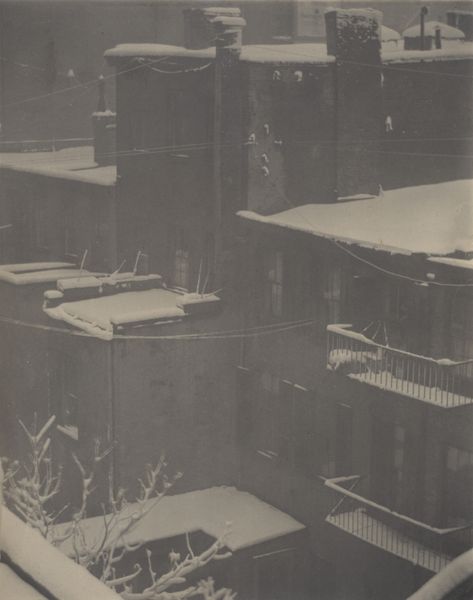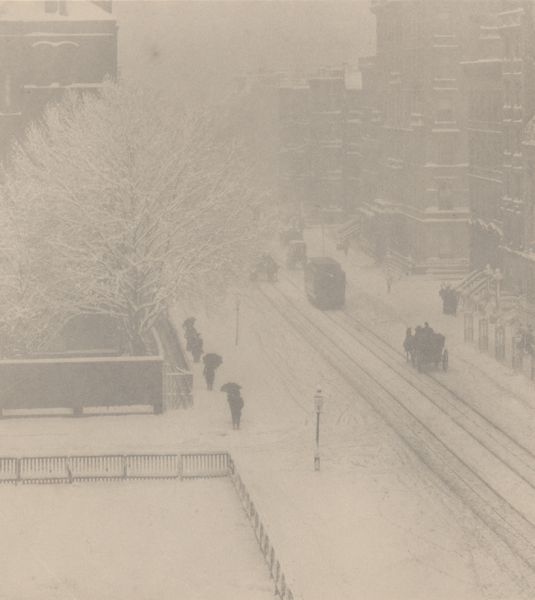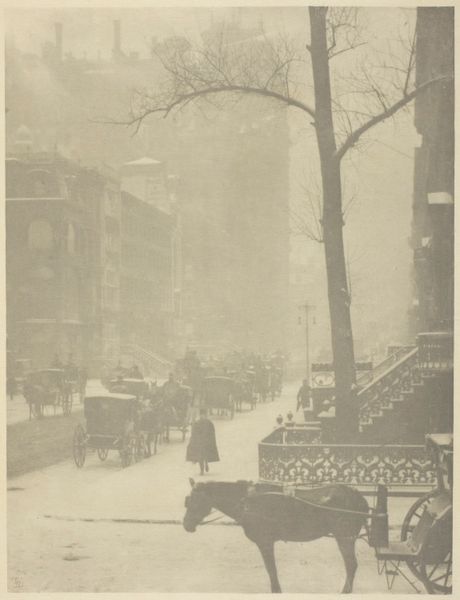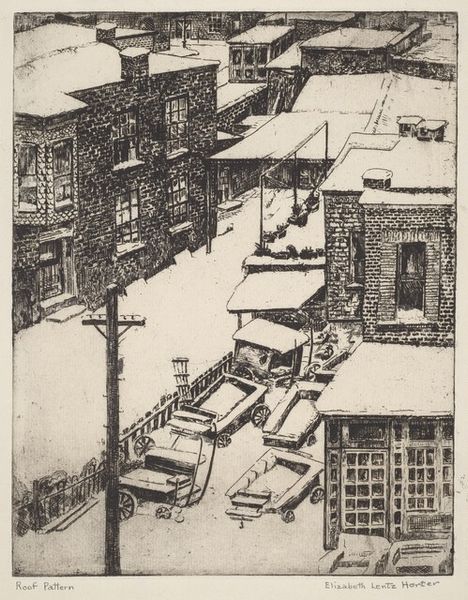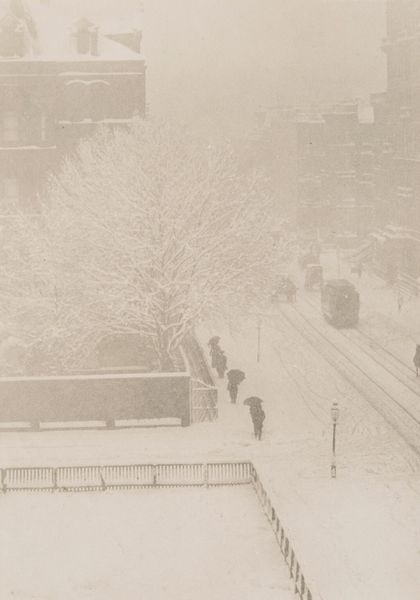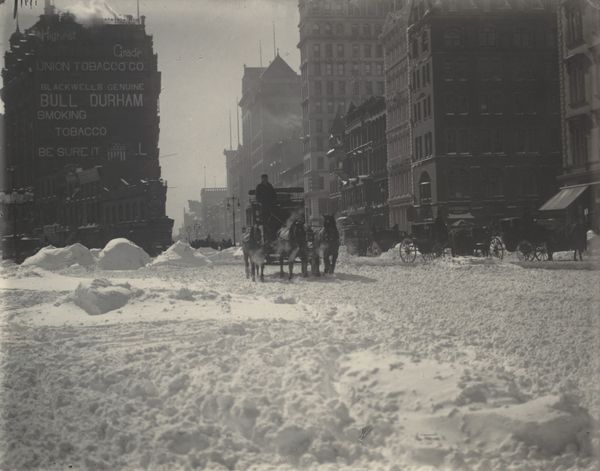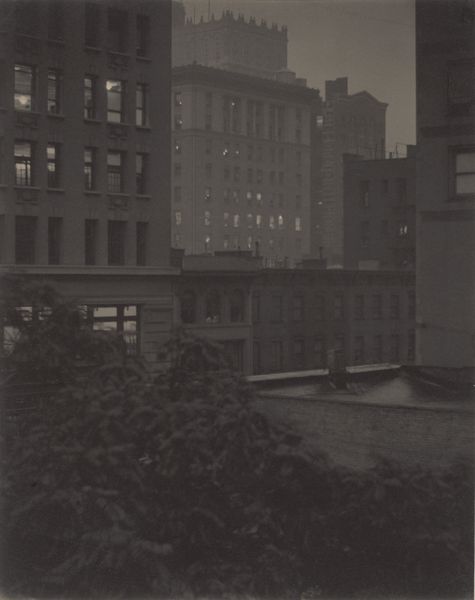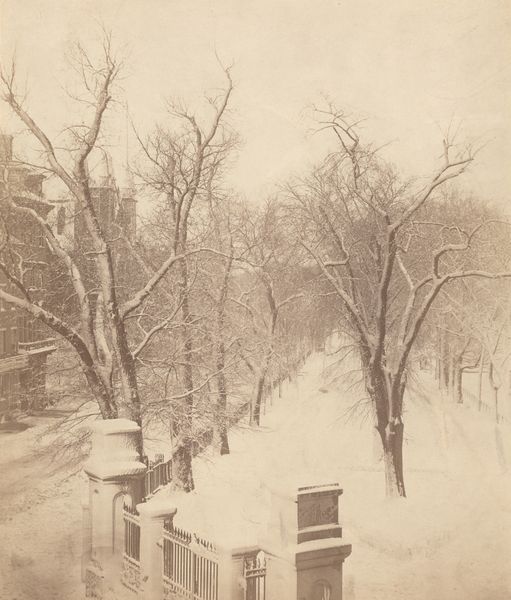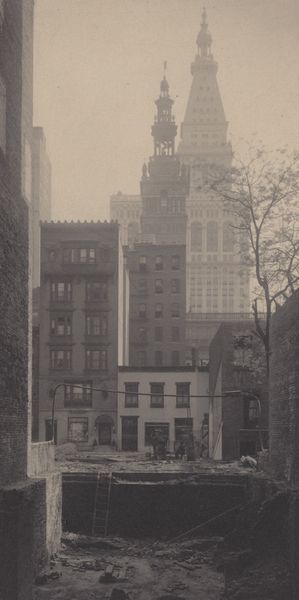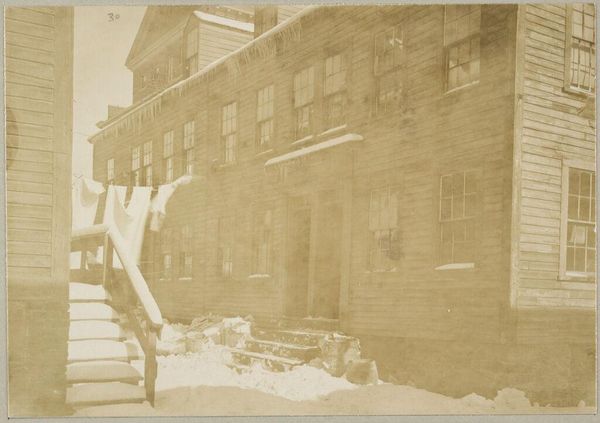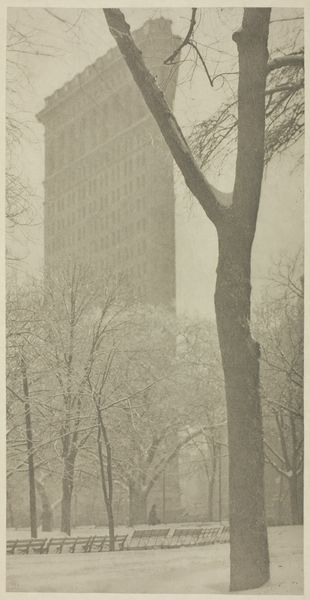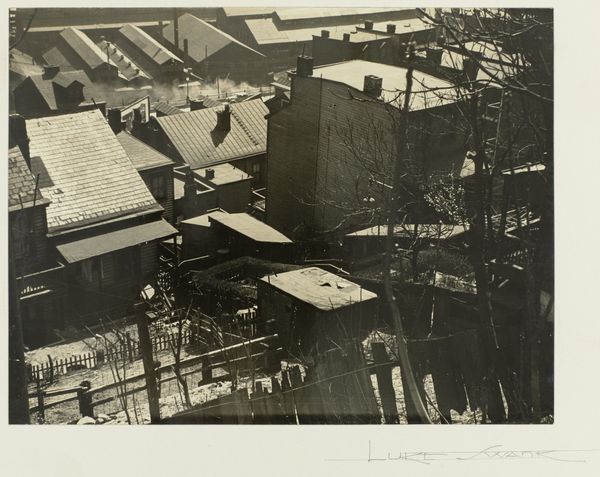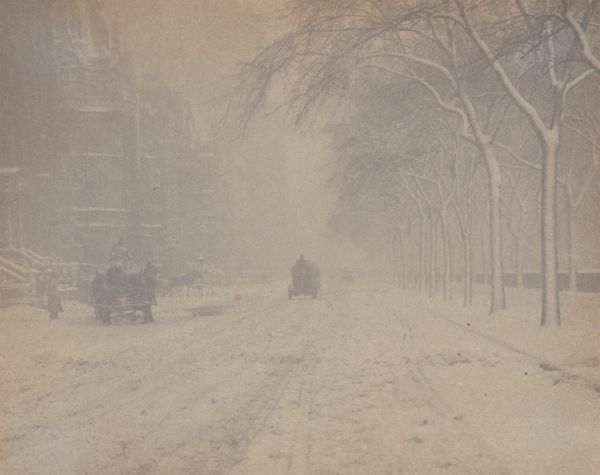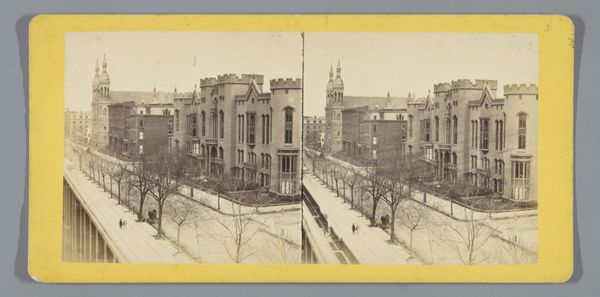
Dimensions: 24.5 × 19.4 cm (image) 25.2 × 20.2 cm (paper)
Copyright: Public Domain
Curator: Alfred Stieglitz's 1915 gelatin silver print, "From the Back-Window "291"", presents a captivating cityscape shrouded in snow. It’s currently housed here at The Art Institute of Chicago. Editor: It feels intensely claustrophobic at first glance. The monochromatic palette really accentuates the weight of the buildings and the pervasive cold of the snow. Curator: Absolutely. Stieglitz captured this scene from his gallery, nicknamed "291," a vital hub for modern art at the time. Seeing it now, I think of the urban alienation felt increasingly by the marginalized communities who faced hardship, living and working in these structures. Editor: Yes, the density of the scene speaks volumes about urban development and the lives intertwined with it. The materials – brick, steel, snow – are all equally essential in creating that feeling. There's labor in every visible element. Curator: And it isn't a celebratory cityscape, right? This view doesn't romanticize urban life. The vantage point forces us to confront the unadorned reality experienced by many. Think of the early twentieth-century debates about labor, immigration, and urbanization that framed so much social discourse at the time. Editor: Precisely. The very means of photography at this time become relevant, don’t they? The gelatin silver printing method allowed for sharper details than some prior photographic techniques, making this urban texture all the more stark. Also, considering Stieglitz's influence, do you see him elevating photography itself into something as refined and serious as painting? Curator: Without a doubt, photography as a legitimate medium for fine art was absolutely part of his agenda, influencing debates about artistic hierarchy at the time. This piece, like others, challenged elitist standards that privileged traditional mediums, like painting, pushing us to question the assumptions and norms of who is or isn't 'seen.' Editor: A fascinating blend of technique, representation, and the social narratives that form its backdrop, don't you think? Curator: Definitely, an artwork dense with sociohistorical implications as well as visual elements. Editor: And equally compelling is its attention to labor and material processes within the city.
Comments
No comments
Be the first to comment and join the conversation on the ultimate creative platform.
